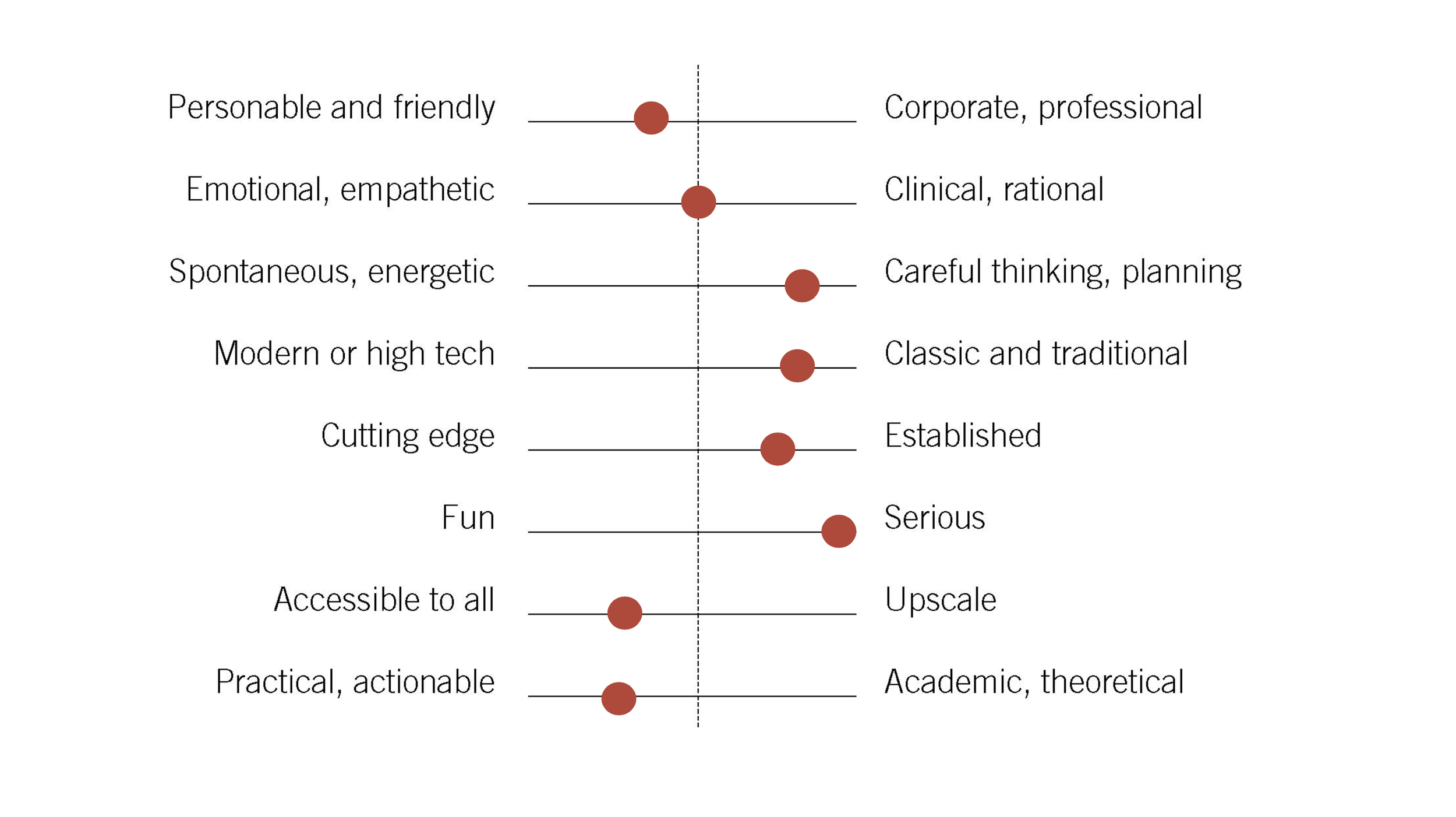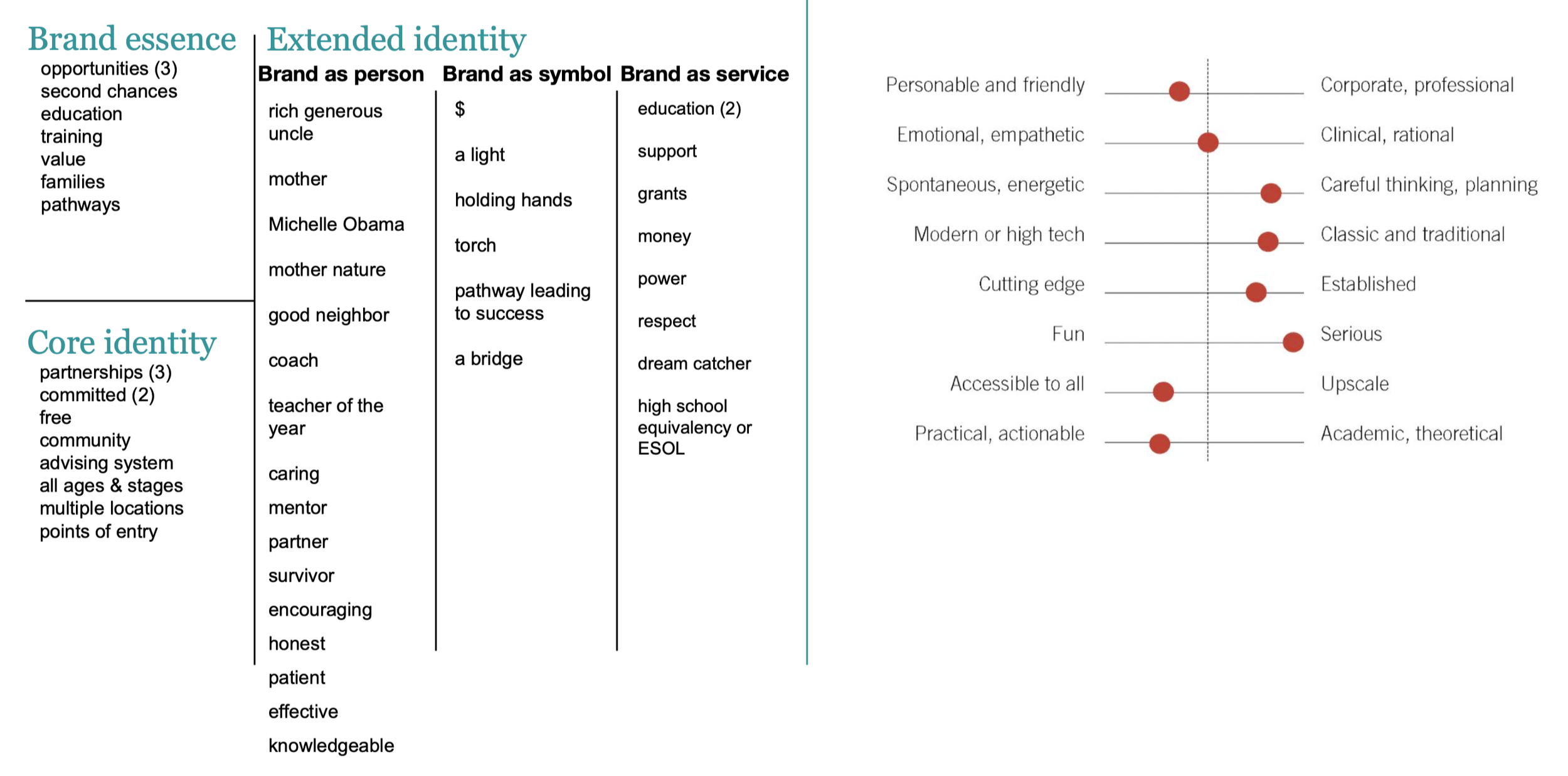Recognizing Change
Organizations decide to rebrand for many reasons, but most often it’s because they’ve changed. Maybe it’s new leadership and a new vision, evolved services, or even a move into a new market. Whatever it may be, their existing brand no longer aligns with who they are (and who they want to be). And this calls for a new story.
In order to help the organization figure out what this new story is, it’s important to spend time really getting to know them. And this is where the brand identity exercise comes into play.
As part of my research phase, I set up time with the client to engage in an exercise to get a better idea of what they aspire their brand identity to be.
What image do they want to project to the world? How do they want their stakeholders and target audience(s) to think of them?
Building a brand works both from the inside out and from the outside in. A strong brand is true to who you are, who you aspire to be, and what the “market” needs. This exercise—which can be completed in as short as an hour—will help us understand the kind of image you want to put out in the world. The best self you want people to see.
At the end of the exercise we’ll all have clarity on what identity their looking to build with this new or refreshed brand, and how best to tell that story to the world.
Understanding the Brand Identity Model
At the center, we have the Brand Essence: the one thing that should come to mind first when people think about the organization or company.
Next, we have the Core Identity: the set of characteristics that define them and distinguish them from others
The third layer is the Extended Identity: the attributes, features, and products that bring the brand to life.
With these concepts in mind, we start our exercise.
Step 1: Gather Your Participants
The best strategies come out of conversation. But we also know that too many cooks in the kitchen creates chaos. I recommend gathering a group of 5-25 individuals, key decision makers and those with the institutional knowledge that can speak to who you are and how you operate.
This exercise can be done in-person or virtually—depending on timing and client needs. But I always say, face-to-face leads to livelier discussion and collaborative outcomes.
Step 2: Build the Palette
Think of 3-5 positive/aspirational words or phrases that they immediately associate with their brand – the value you create for your audiences and stakeholders, your impact on the community, and the good you do for the world.
If you’re in person, you can write these on sticky notes which get posted somewhere central that everyone can see them. If you’re online, enter them as a chat storm—all at once so that there isn’t any bias at play.
This is where you’ll start to realize overlaps and duplicates in participants answers. This is powerful! And likely an important part of your brand story.
Step 3: Identify the Brand Essence
Once you’ve gone over the palette as a group, everyone selects two words/phrases that, from their perspective, best speaks to essence of who the organization is. Move these words into their own space.
Remember: this is the one thing that should come to mind first when people think about the organization or company.
Step 4: Establish the Core Identity
Now, revisit the larger palette and select five that feel trust to your organization and/or distinguish you from others in your industry or field.
Step 5: Align on the Extended Identity
This part of the exercise focuses on revealing the attributes, features, and products that bring the brand to life.
Starting with the brand as a person: If your organization were a person, what type of person would they be and why? This can be an actual person—a public figure perhaps, like Dolly Parton—or a type of person, like a coach or a teacher.
Next, thinking about the brand as a symbol: If you had to represent your organization with an image or an icon, what would it be? No drawing required—just describe it (ex. A bridge).
Lastly, brand as a service: what is the one service or experience that you offer that embodies your essence as an organization? Go with your gut—this isn’t about considering all your services or even going with your most popular. Which one best encapsulates what you stand for?
Step 6: Uncovering the Brand Personality
On the diagram, you’ll see a series of personality dichotomies. As a group, discuss where you think your organization falls on the spectrum.
This is challenging, I know! But a lot can come out of the conversation. Are their personality attributes that you think are missing? Dichotomies you disagree with? Talk it out!
And if you are realizing where you currently are isn’t where you want to be, now’s the time to figure that out.
Step 7: Compile the Brand Identity
Nows the time to compile all of the answers from steps 2-6 into a singular report. A snapshot of the brand you’re proud to amplify to the world.
An example brand identity card for an educational organization






